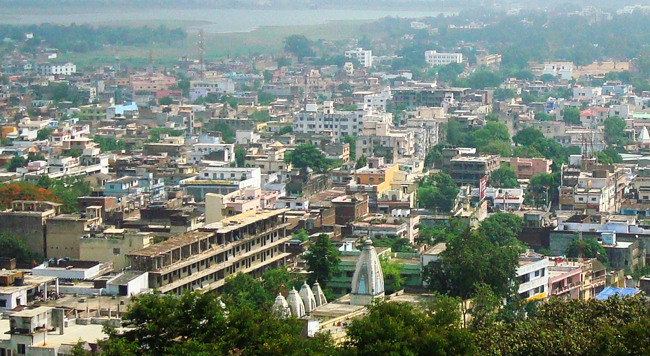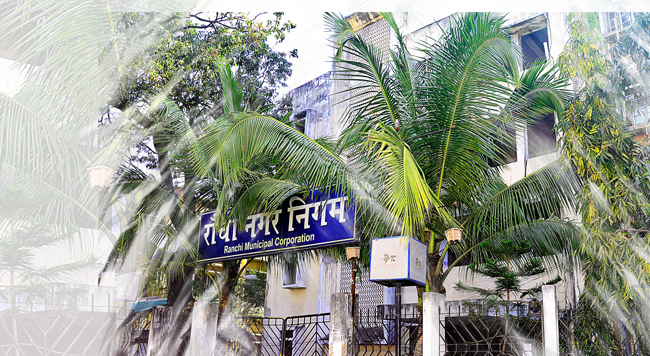AMRUT
Providing basic services (e.g. water supply, sewerage, urban transport) to households and build amenities in cities which will improve the quality of life for all, especially the poor and the disadvantaged is a national priority. An estimate of the funds required over a 20 year period, at 2009-10 prices, was made by the High Powered Expert Committee (HPEC) during 2011. The Committee estimated that Rs. 39.2 lakh crore was required for creation of urban infrastructure, including Rs. 17.3 lakh crore for urban roads and Rs. 8 lakh crore for services, such as water supply, sewerage, solid waste management
and storm water drains. Moreover, the requirement for Operation and Maintenance (O&M) was separately estimated to be Rs. 19.9 lakh crore.
Therefore, the purpose of Atal Mission for Rejuvenation and Urban Transformation (AMRUT) is to (i) ensure that every household has access to a tap with assured supply of water and a sewerage connection; (ii) increase the amenity value of cities by developing greenery and well maintained open spaces (e.g. parks); and (iii) reduce pollution by switching to public transport or constructing facilities for non-motorized transport (e.g. walking and cycling). All these outcomes are valued by citizens, particularly women.
A sound institutional structure is the foundation to make Missions successful. Therefore,
Capacity Building and a set of Reforms have been included in the Mission. Reforms will lead to improvement in service delivery, mobilization of resources and making municipal functioning more transparent and functionaries more accountable, while Capacity Building will empower municipal functionaries and lead to timely completion of projects
Mission Components
1.1The components of the AMRUT consist of capacity building, reform implementation, water supply, sewerage and septage management, storm water drainage, urban transport and development of green spaces and parks. During the process of planning, the Urban Local Bodies (ULBs) will strive to include some smart features in the physical infrastructure components.
The details of the Mission components are given below.
1.1.1 Water Supply
i. Water supply systems including augmentation of existing water supply, water
treatment plants and universal metering.
ii. Rehabilitation of old water supply systems, including treatment plants.
iii. Rejuvenation of water bodies specifically for drinking water supply and recharging of
ground water.
iv. Special water supply arrangement for difficult areas, hill and coastal cities, including
those having water quality problems (e.g. arsenic, fluoride)
1.1.2 Sewerage
i. Decentralized, networked underground sewerage systems, including augmentation
of existing sewerage systems and sewage treatment plants.
ii. Rehabilitation of old sewerage system and treatment plants.
iii. Recycling of water for beneficial purposes and reuse of wastewater.
1.1.3 Septage
i. Faecal Sludge Management- cleaning, transportation and treatment in a cost-effective manner.
ii. Mechanical and biological cleaning of sewers and septic tanks and recovery of
operational cost in full.
1.1.4 Storm Water Drainage
i. Construction and improvement of drains and storm water drains in order to reduce
and eliminate flooding.
1.1.5 Urban Transport
i. Ferry vessels for inland waterways (excluding port/bay infrastructure) and buses.
ii. Footpaths/walkways, sidewalks, foot over-bridges and facilities for non-motorised
transport (e.g. bicycles).
iii. Multi-level parking.
iv. Bus Rapid Transit System (BRTS).
3.1.6 Green space and parks
i. Development of green space and parks with special provision for child-friendly
components.
|
S.No
|
Type
|
Milestones
|
Implementations timeline
|
|
1
|
E-Govenance
|
Digital ULBs
· Creation of ULB website.
· Publication of e-newsletter.
Digital India Initaiatives
· Support Digital India (ducting to be done on PPP mode or by the ULB itself ).
|
6 months
6 months
6 months
|
|
|
|
Coverage with E-MAAS (from the date of hosting the software)
· Registration of Birth, Death and Marriage,
· Water & Sewerage Charges,
· Grievance Redressal,
· Property Tax,
· Advertisement Tax,
· Issuance of Licenses,
· Building Permissions,
· Mutations,
· Payroll,
· Pension,
|
24 months
|
|
|
|
· E-procurement,
· Personnel Staff management and
· Project management.
|
36 months
|
|
2
|
Constitution and professionalization of municipal cadre
|
1. Establishment of municipal care.
2. Cadre linked training.
3. Policy for engagement of interns in ULBs and implementation.
4. The State will prepare a Policy for Right-sizing the number of municipal functionaries depending on, say, population of the ULB, generation of internal resources and expenditure on salaries.
|
24 months
24 months
12 months
36 months
|
|
3
|
Augmenting double entry accounting
|
1. Complete migration to double entry accounting system and obtaining an audit certificate to the effect from FY2012-13 onward.
2. Appointment of internal auditor.
3. Publication of annual financial statement on website.
|
12 months
24 months
Every year
|
|
4
|
Urban Planning
|
1. Preparation of Master Plan using GIS.
2. Preparation of Service Level Improvement Plans (SLIP).
3. Establish Urban Development Authorities.
4. Make action plan to progressively increase Green cover in cities to 15% in 5 years.
5. Develop at least one Children Park every year in AMRUT cities.
6. Establish a system for maintaining of parks, playground and recreational areas relying on People Public Private Partnership (PPPP) model.
7. Make a State level policy to implement the parameters given in National Mission for Sustainable Habitat.
|
48 months
6 months
36 months
6 months
Every year
12 months
24 months
|
|
5
|
Devolution of funds and functions
|
1. Ensure transfer of 14th FC devolution to ULBs.
2. Appointment of State Finance Commission (SFC) and making decisions.
3. Implementation of SFC recommendation within timeline.
4. Transfer of all 18 functions to ULBs.
|
6 months
12 months
18 months
12 months
|
|
6
|
Review of Building by-laws
|
1. Revision of building bye laws periodically.
2. State to formulate a policy and action plan for having an area greater than 500 square meters and all public buildings.
3. State to formulate a policy and action plan for having Rain water harvesting structures in all commercial, public building and new buildings on plots of 300 sq. meters and above.
4. Create single widow clearance for all approvals to give building permissions.
|
12 months
12-24 months
12-24 months
12 months
|
|
7
|
Set-up financial intermediary at state level
|
1. Establish and operationalize financial intermediary- pool finance, access external funds, float municipal bonds.
|
12-18 months
|
|
8(a)
|
Municipal tax and fees improvement
|
1. Atleast 90% coverage,
2. Atleast 90% collection,
3. Make a policy to, periodically revise property tax, levy charges and others fees,
4. Post Demand Collection Book (DCB) of tax details on the website,
5. Achieve full potential of advertisement revenue by making a policy for destination specific potential having dynamic pricing module.
|
12 months
|
|
8 (b)
|
Improvement in levy and collection of user charges
|
1. Adopt a policy on user charges for individual and institutional assessments in which a differential rate is charged for water use and adequate safeguards are included to take care of the interests of the vulnerable,
2. Make action plan to reduce water losses to less than 20% and publish on the website,
3. Separate accounting for user charges,
4. Atleast 90% billing
5. Atleast 90% collection.
|
12 months
|
|
9
|
Credit Rating
|
1. Complete the credit rating of the ULBs
|
18 months
|
|
10
|
Energy and Water audit
|
1. Energy (Street lights) and Water Audit (including non-revenue water of losses audit),
2. Making STPs and WTPs more energy efficient,
3. Optimize energy consumption reliance on renewable energy,
4. Give incentives for green buildings (e.g. rebate in property tax or charges connected to building permission/development chages)
|
12 months
12 months
12 months
24 months
|
|
11
|
Swachh Bharat Mission
|
1. Elimination of open defection,
2. Waste Collection (100%),
3. Transportation of Waste (100%),
4. Transportation of Waste (100%),
|
36 months
|



